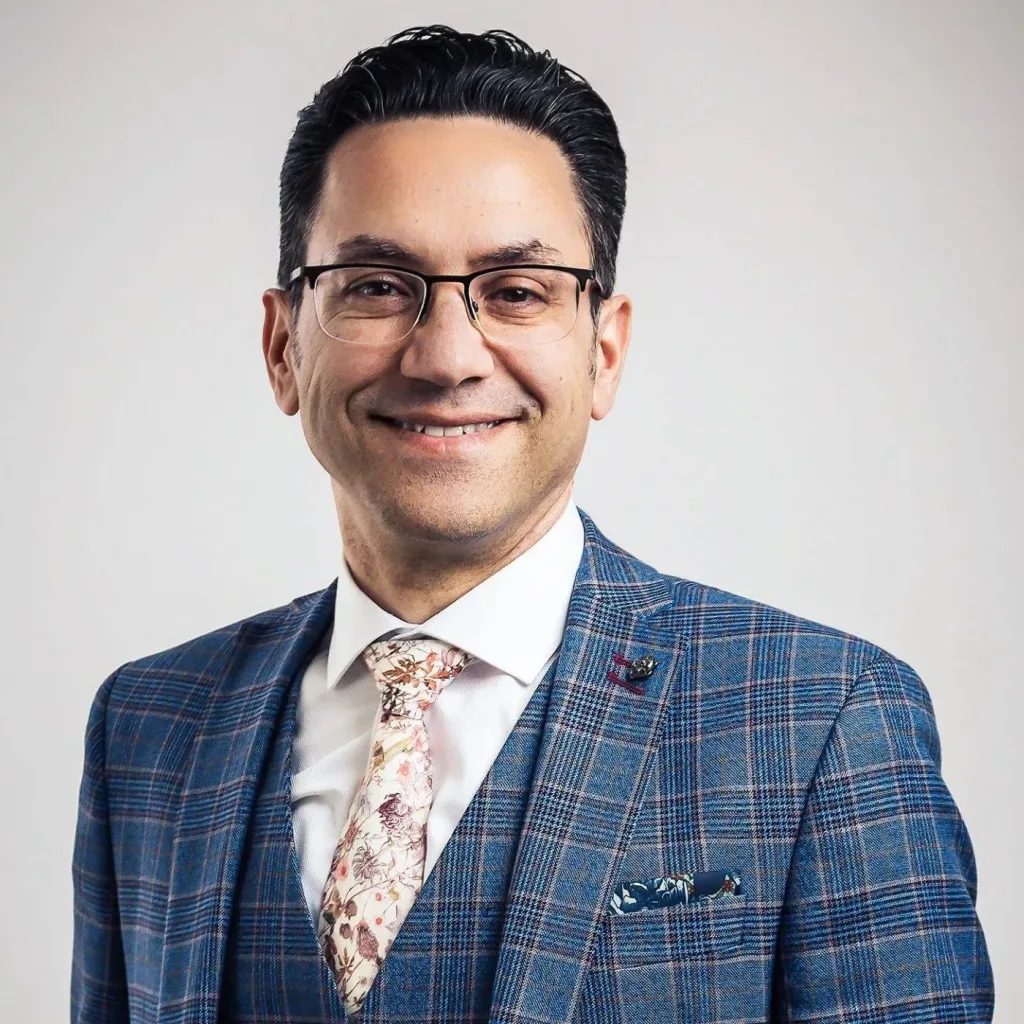Gynecomastia refers to the overdevelopment of the breasts in men, which can bring troubling physical and aesthetic issues. Men can develop enlarged breast tissue for many reasons, including hormonal changes and the use of steroids.
This article explores steroid-related gynecomastia in depth – whether it disappears of its own accord and what the potential treatment options are, including the highly effective gynecomastia reduction surgery.
The CREO Clinic’s Medical Director, Dr. Omar Tillo, has performed countless successful gynecomastia reductions over the course of his career, allowing him to create a bespoke treatment plan that adapts his approach to your specific needs, prioritise your safety, and work towards sculpting a firmer, flatter, more athletic-looking chest.
To book a consultation with Dr. Tillo, contact the CREO Clinic today and find out how gynecomastia surgery can help you to achieve a flatter, more contoured chest.
Why Steroid Users Suffer From Gynecomastia
Users of anabolic steroids may find that the drug disturbs their natural balance between testosterone and oestrogen. Oestrogen, a hormone responsible for creating female physical attributes, occurs naturally in men but is usually balanced with testosterone – the hormone that encourages typically male physical features.
When these hormones become unbalanced, breast tissue around the nipples can become overdeveloped – this is called gynecomastia.
Anabolic steroid use is common among bodybuilders, who often rely on the drug as a quick route to muscle growth. After many cycles of steroids, excess fatty tissue can begin to develop in the breast as the hormones become imbalanced in the body, generating female physical features.
Gynecomastia Symptoms
The main symptom of gynaecomastia is the new growth of tissue behind the nipple. However, there are some other symptoms that can accompany this growth, such as:
- Sensitivity in the nipple when wearing clothes
- Tenderness around the nipple
- Pain in the breasts (particularly common in adolescents)
Does Gynecomastia Go Away Naturally?
For some men, this overdevelopment of glandular breast tissue may go away on its own. However, in the majority of cases, it does not.
For adolescents who develop gynecomastia during puberty, it is possible that the overdeveloped breast tissue subsides over time, and excess male breast tissue caused by weight gain may also reduce as a result of exercise and careful dieting. Nevertheless, it is important to note that in most such cases, the excess tissue will not disappear of its own accord.
If the gynecomastia is the result of certain drugs or medications, such as marijuana, antiandrogens, chemotherapy treatment, or anabolic steroids, the excess breast tissue may reduce following a period of abstinence, but this depends greatly on the severity and stage of development of the glandular tissue.
In short, a general rule is: if your gynecomastia has passed the initial ‘proliferative’ stage, the issue is likely to be permanent and can only be removed via a surgical reduction.
Temporary Solutions For Gynecomastia In Steroid Users
Many men experiencing gynecomastia due to steroid use try to reduce its appearance using compression garments or supplements (e.g Choline, Indole-3-carbinol, or Vitamin E), but these treatments don’t appear to be clinically effective.
Stopping the use of anabolic steroids may arrest the gynecomastia development, as will hormone treatments such as tamoxifen. However, if the growth has passed its initial stages, it is likely that a permanent surgical solution will be needed.
How To Treat Gynecomastia
The most permanent solution for overdeveloped male breasts is a gynecomastia reduction – similar in procedure to a breast reduction for women. It is a straightforward surgery that is often far less extensive than a female breast reduction, making both the surgery and its subsequent downtime much shorter.
Gynecomastia Surgery
Generally, surgery for gynecomastia requires a single incision around the circumference of the areola, which will allow Dr. Tillo access to the breast tissue surrounding it. He will remove the breast tissue in excess, then close the incision up – this will tighten up the skin of the rest into its new, flatter form.
In certain circumstances, liposuction can also help to reduce breast development. This is usually for removing pockets of stubborn fat to flatten out the chest and give it a tighter, more distinctly masculine contour.
Benefits Of a Gynecomastia Reduction
There are many quality-of-life benefits that surgery to reverse developing gynecomastia can offer, such as:
- Greater physical comfort – Overdeveloped male breast tissue can bring physical discomfort through swelling and chafing – a reduction in glandular tissue can offer relief from the symptoms.
- A more athletic-looking, contoured chest – Gynecomastia can lead to a sagging, less aesthetically pleasing chest. In addition to reversing breast enlargement, the procedure can also tighten up and contour the chest to give it more definition.
- More freedom to exercise – Larger male breasts can rub and chafe during exercise and flattening the chest by removing excess glandular tissue can be an extremely effective solution.
- Relief from back pain – For men with more severe gynecomastia, the weight of excess glandular breast tissue may lead to back pain that can be reduced permanently through surgery.
Before And After Results
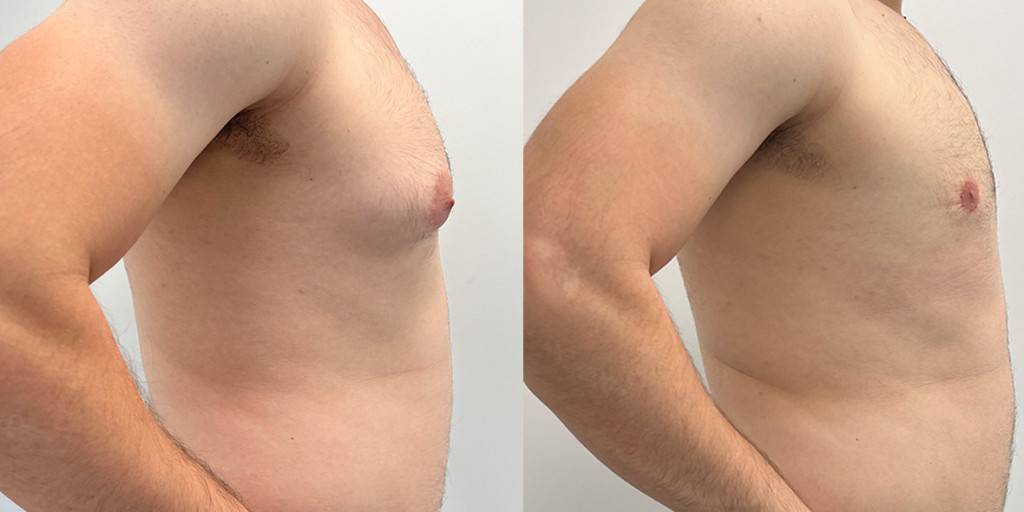
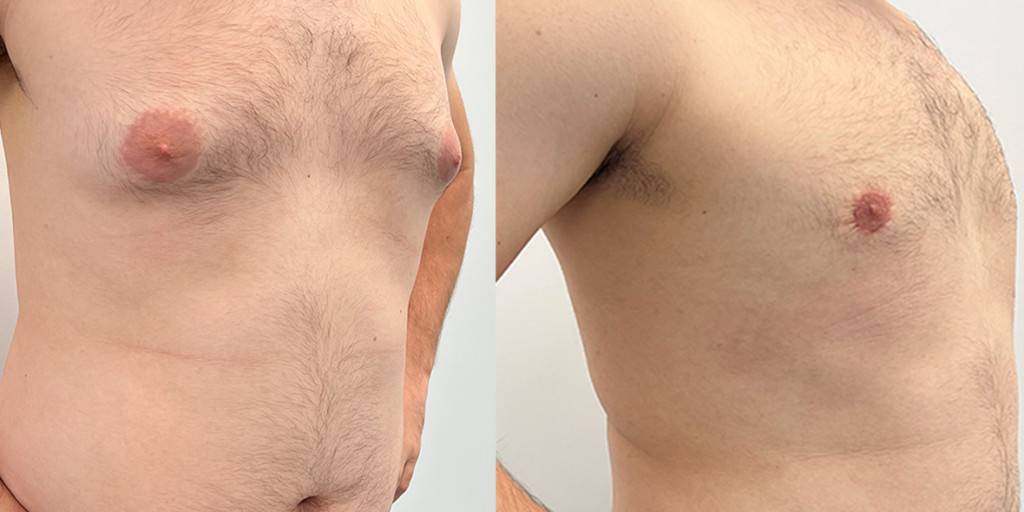
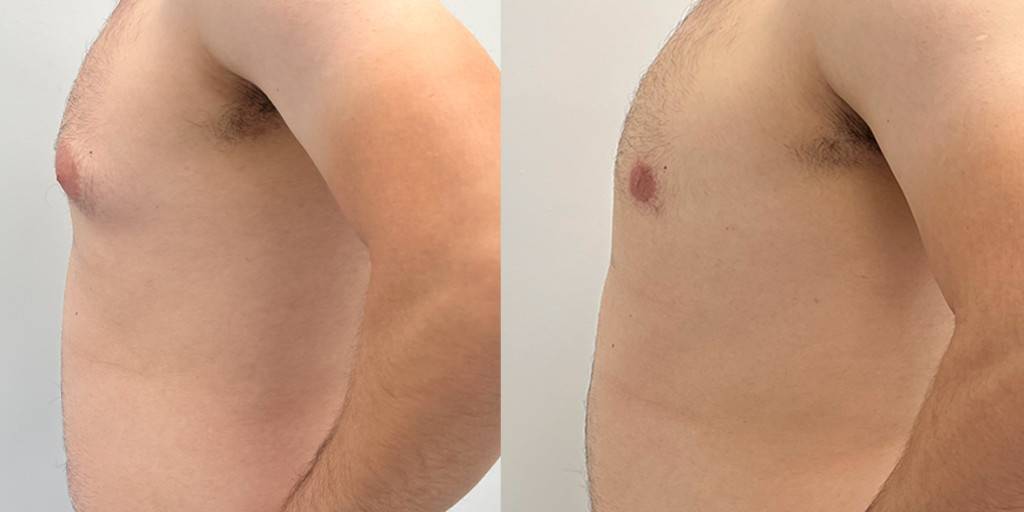
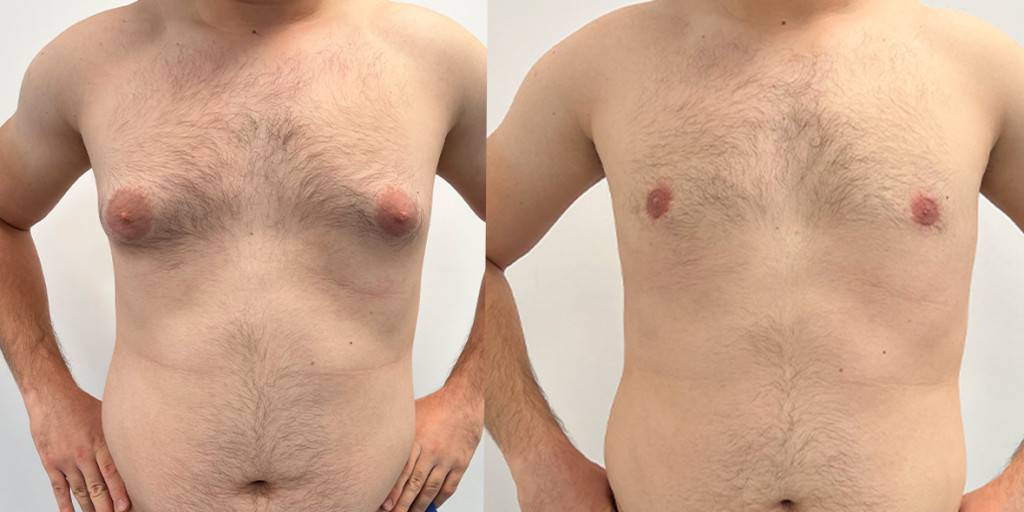
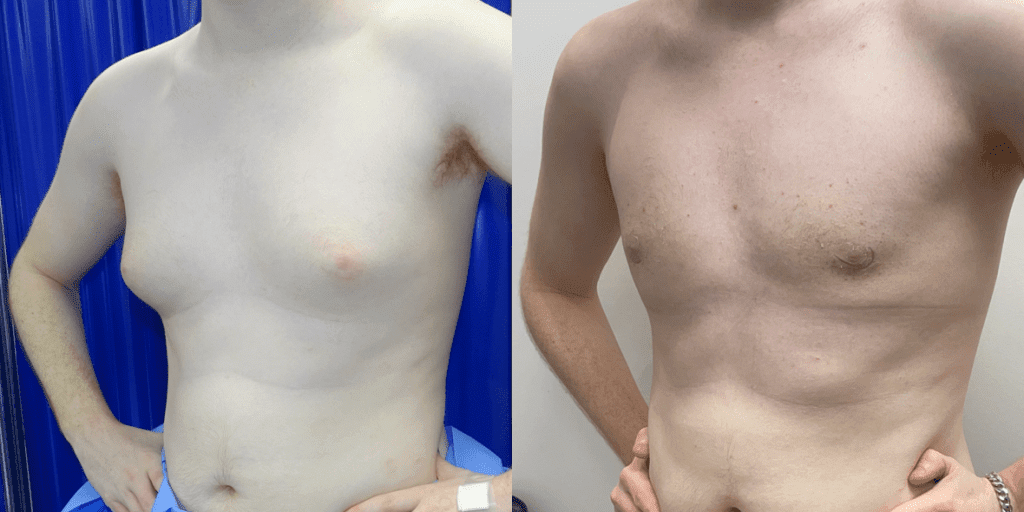

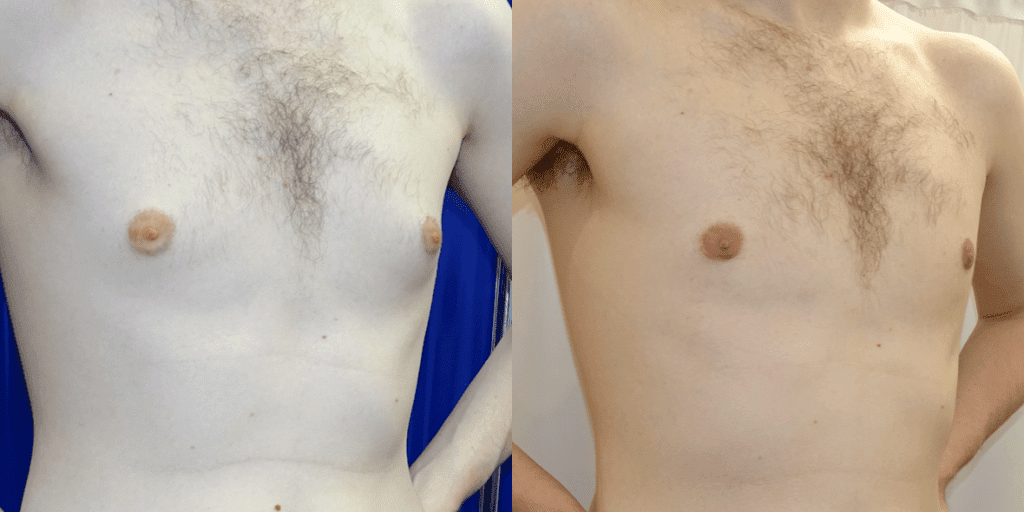

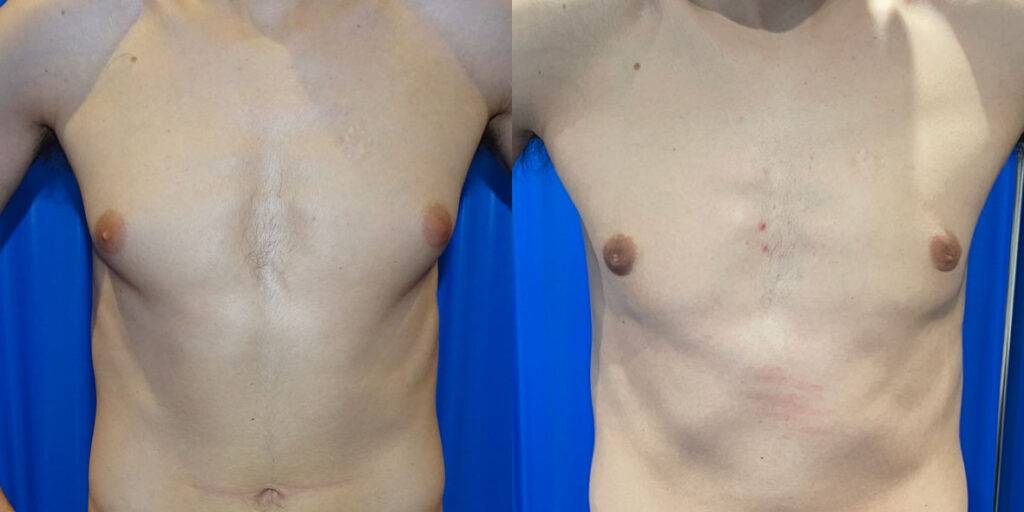
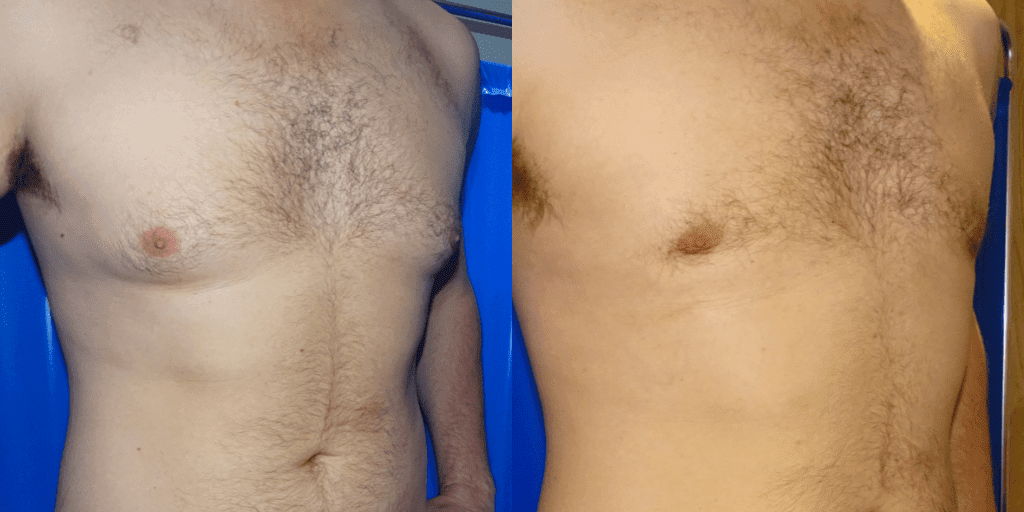

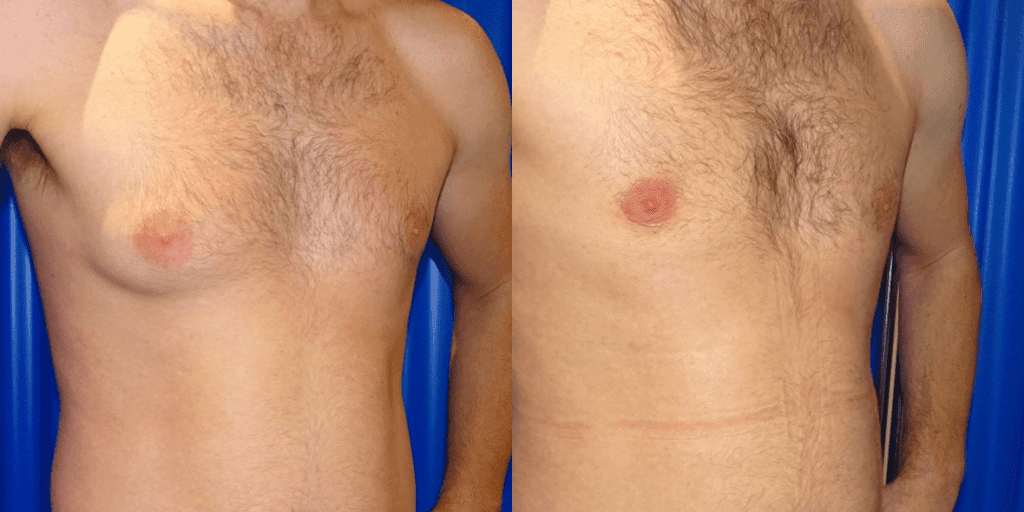
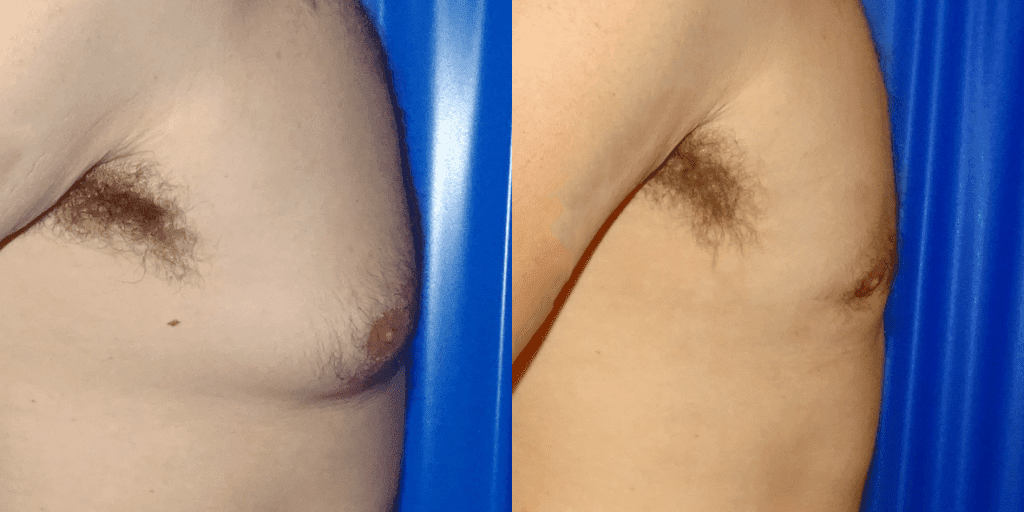
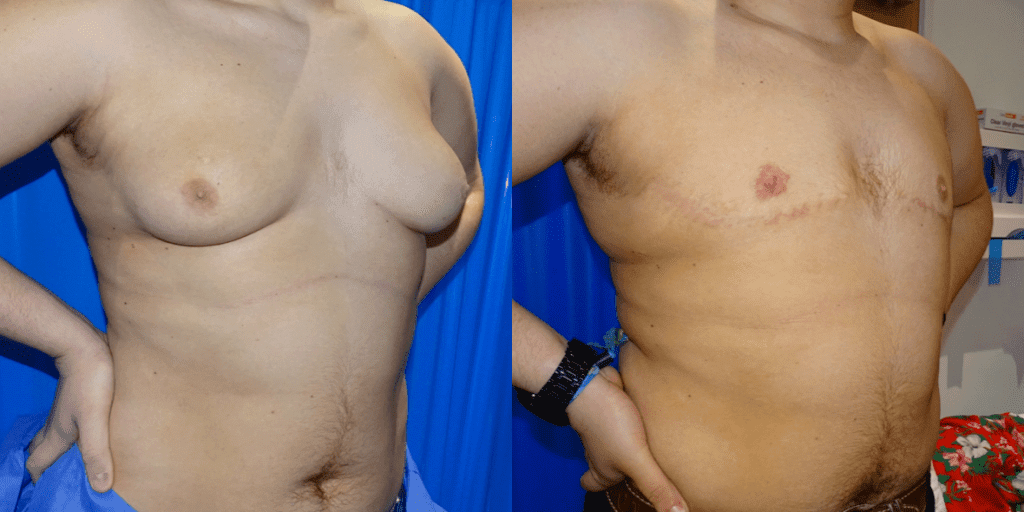
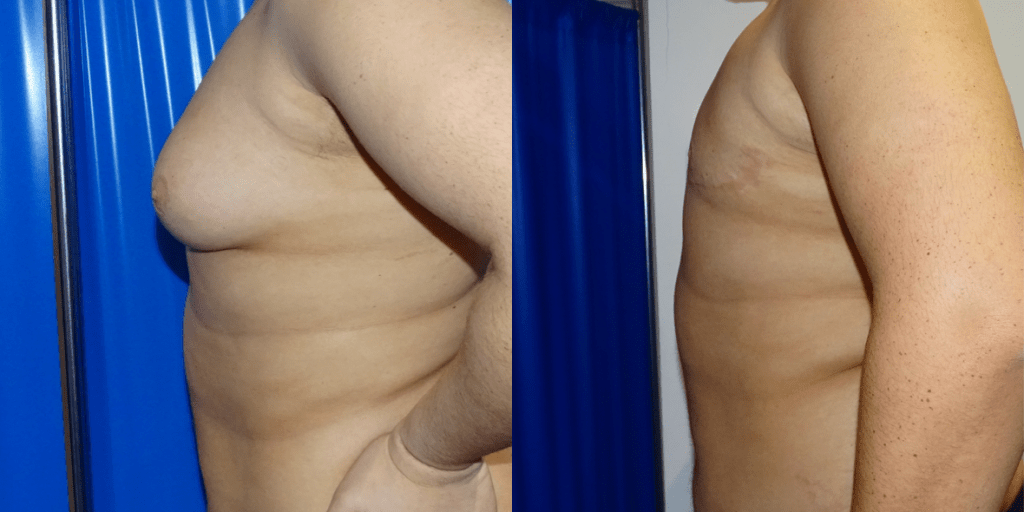
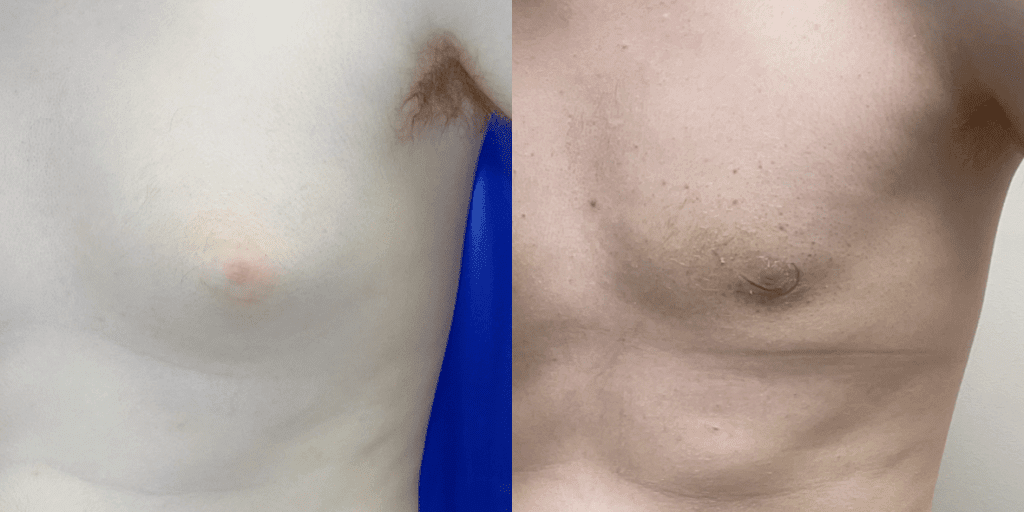
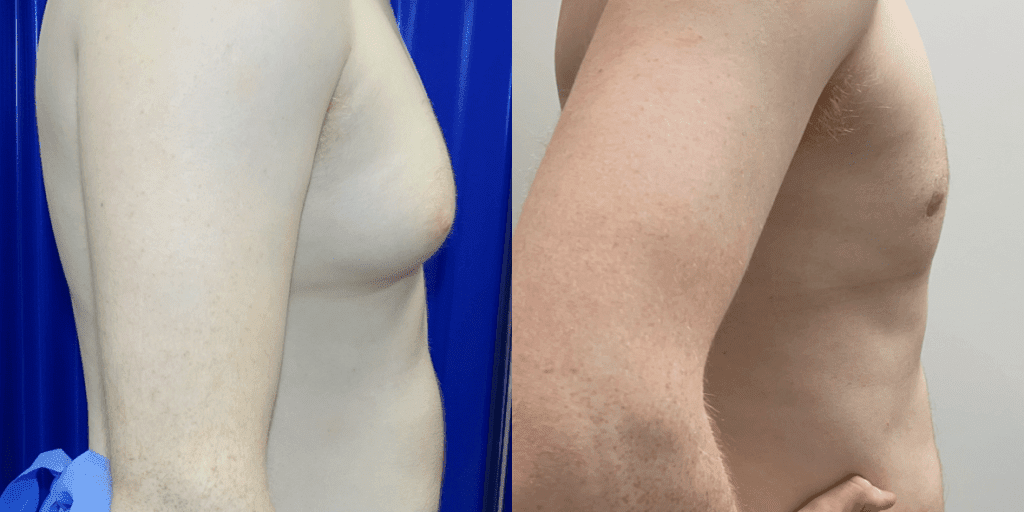
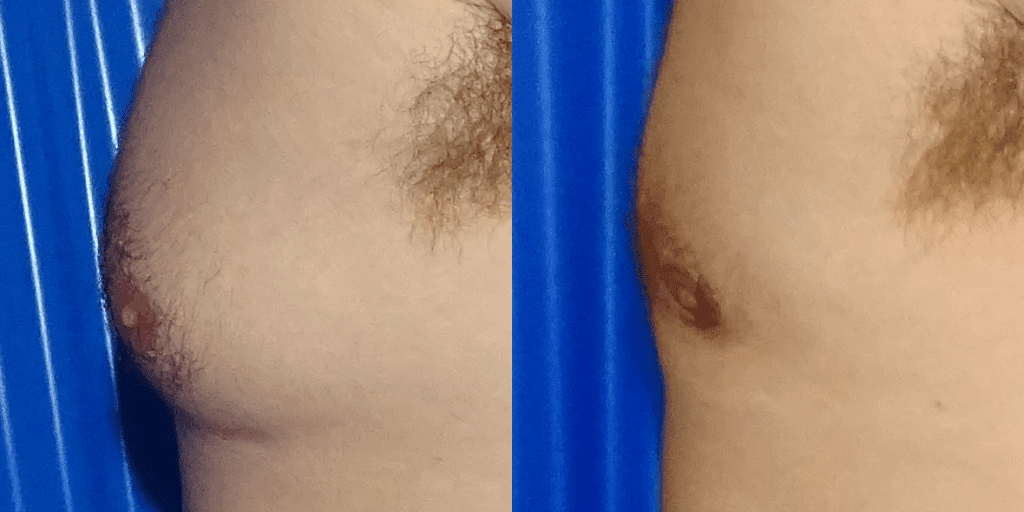
Should Gynecomastia from Steroids Be Surgically Treated?
Given that most cases of gynecomastia are unlikely to resolve themselves, surgery can be the best treatment to offer some resolution to the many discomforts of all breast tissue. If your gynecomastia has developed from the use of anabolic steroids, surgery can be an effective option.
Gynecomastia reduction is a popular procedure with high levels of patient satisfaction due to its well-earned reputation for transformative physical change when dealing with unwanted breast growth. The effects are permanent, non-invasive, and uniquely effective in relation to other available solutions.
Gynecomastia Surgery FAQs
How much does gynecomastia surgery cost in the UK?
At the CREO Clinic, gynecomastia reduction surgery begins from £6,900 for open excision under sedation or local anaesthetic, rising to £8,900 for open excision under general anaesthetic. Each and every surgery at our clinic is bespoke to the patient’s specific needs, so a full cost breakdown will only be available after your first consultation.nnYour price will include the procedure, hospital, and surgeon fees as well as the cost of both the anaesthetist and anaesthetic used.nnShould you wish to spread the cost of your reduction surgery over multiple instalments, our financing partner, Chrysalis Finance, offers 0% APR loans over 12 months. Longer instalment periods are available at varying rates of APR.n
What does the procedure process look like?
Dr. Tillo usually uses a circular incision that follows the outer edge of the areola, just as is sometimes used in a female breast reduction. He removes the excess fatty tissue beneath, then closes up the incisions.n
How long is the recovery period for gynecomastia surgery?
The majority of patients can return to work after 1-2 weeks of recovery, and most feel comfortable engaging in light activities within their daily routine. However, it is important to avoid strenuous exercise until six weeks of recovery have passed.n
When will results be noticeable?
The change in the size of your breasts will be noticeable immediately after the surgery. The full results will be visible after six weeks once the inflammation is fully subsided.n
Does gynecomastia surgery leave a scar?
Like any surgery, gynecomastia reduction leaves some scarring. The scar from a circular incision is often well disguised in the natural contour of the areola. The best way to minimise scarring is to ensure you have chosen an experienced surgeon who understands the need for delicate, careful incision-making.n
Does gynecomastia surgery leave a scar?
Like any surgery, gynecomastia reduction leaves some scarring. The scar from a circular incision is often well disguised in the natural contour of the areola. The best way to minimise scarring is to ensure you have chosen an experienced surgeon who understands the need for delicate, careful incision-making.n
Contact CREO Clinic Today To Schedule A Consultation
If you’re struggling with developing gynecomastia, consider the positive change a consultation with Dr. Omar Tillo, the CREO Clinic’s double board-certified male body contouring surgeon can bring to your life.
Dr. Tillo’s skill and expertise in gynecomastia surgery are matched only by his conscientious approach to patient needs – he works to achieve the best possible outcomes and prioritises your safety and well-being in the process.
